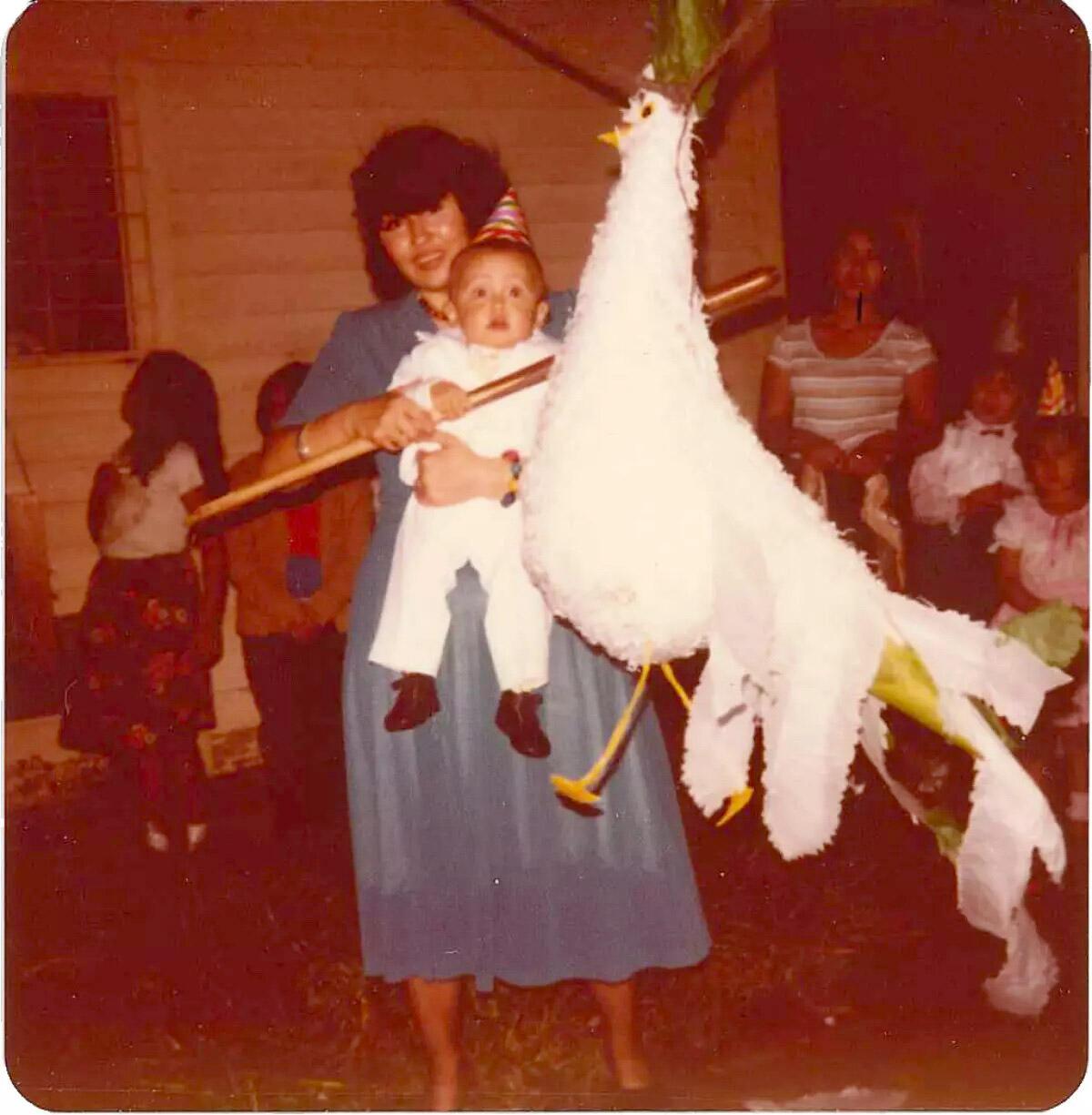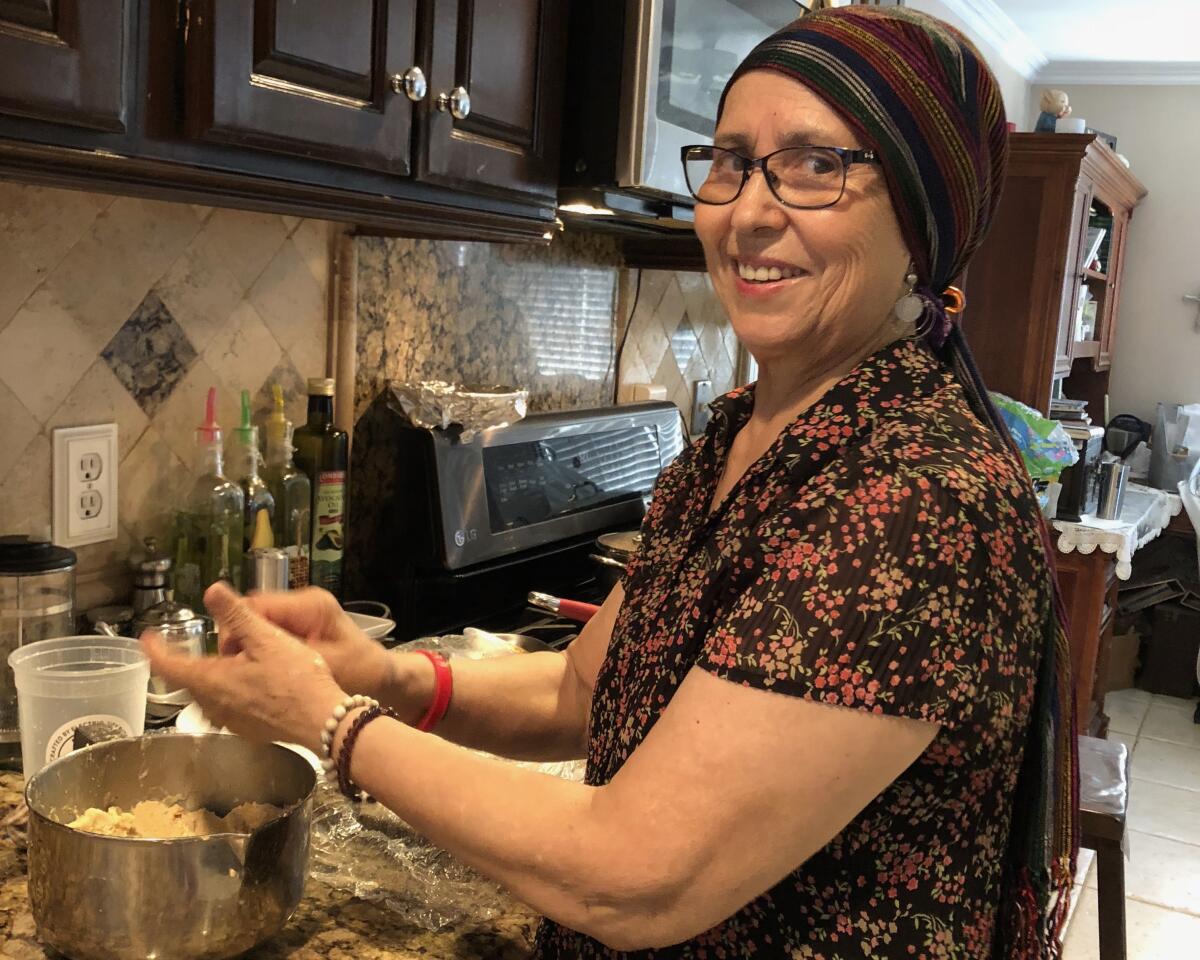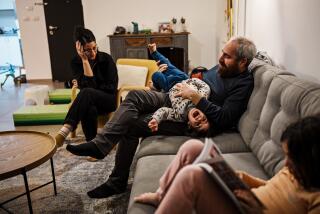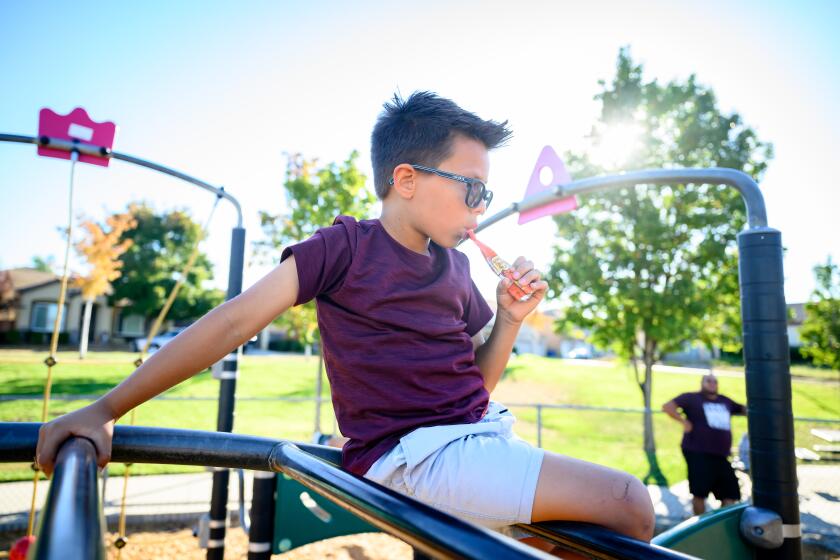Column: My Mami’s hard life, cut short right when it was about to get really good

Every time I visit the grave of my mother, Maria de la Luz Arellano Miranda, I follow the same ritual.
I park on a cul-de-sac within Holy Sepulcher Cemetery in Orange, then wander around for at least 10 minutes, annoyed with myself for always forgetting the exact location where Mami is buried. I eventually find her tombstone: black marble engraved with the years of her life, a personal message crafted by my sisters, her nickname, La Ley (“The Law,” given to her by her father, my Papa Je, when she was just a girl for her no-nonsense ways) and a small portrait of her in her early 20s, worthy of a beauty queen.
My mother’s grave is within eyesight of a big statue of the Santo Niño de Atocha, an apparition of the infant Jesus omnipresent in the lives of people from the state of Zacatecas, where she was born. Many from that diaspora are buried in Holy Sepulcher, including my maternal grandparents, family friends and cousins — and, one day, myself. So I recite the Lord’s Prayer and a Hail Mary for all of us, then pull up YouTube on my smartphone to play a mariachi version of “Lara’s Theme,” the song Mami requested we play at her funeral.
The moment that mournful violins sound out their familiar melody, I bawl. The pain I feel at her death in 2019 from ovarian cancer at age 67 remains too raw. The guilt over not visiting her enough while she was alive, for not appreciating Mami’s love until it was too late or not saying things I wanted to tell her, haunts me.
My family laid her to rest five years ago today, in a ceremony I remember like it happened yesterday.
Hundreds attended the Mass in her name at St. Boniface in Anaheim, my family’s home parish for decades. The noontime burial was sunny but not hot. There was mariachi, wails, fainting, hugs. Afterward, we returned to St. Boniface for a reception catered by Burritos La Palma, the famous Southern California chain with roots in the same Mexican city, Jerez, as my parents.
The rendition of “Lara’s Theme” I play — titled “Tema de Lara” in Spanish — is by Los Camperos de Nati Cano, the pioneering L.A.-based outfit that Mami was a fan of for backing Linda Ronstadt during her mariachi era. As a hopeful, solitary trumpet soars over the strums of guitars, the tears don’t stop as I think about everything I learned from Mami’s hard life, one cut short right when it was about to get really good.
A year of devastating frost followed by another year of drought destroyed consecutive harvests for my grandfather and forced him to move his family to the United States in the 1960s, when Mami was 9. His declining health meant she had to drop out of middle school in Anaheim to pick strawberries. She dealt with the alcoholism and gambling of my father in their early years of marriage, and his machismo until the day she passed.
Yet Mami always pushed forward. She got a union job as a tomato packer at the old Hunt-Wesson factory in Fullerton, which entitled her to a small pension in her later years (she would say with pride that her union representative told the female workers to never let their husbands touch the money). It was Mami who convinced my dad to save enough money to buy a three-bedroom, two-bath home with a swimming pool in a better part of Anaheim in 1988 to raise us kids.
Never fully fluent in English, Mami nevertheless took us to the library as much as she could. When she realized that pulling us from school to spend weeks in Mexico affected our learning, Mami flatly told my dad that those vacations wouldn’t happen again. When Hunt-Wesson laid her off in the late 1990s, she studied to become a beautician, then transitioned to child care when the state wouldn’t allow her to get a license because she never graduated from high school. Her example of facing a cruel world with grit and grace influenced my three siblings and me to succeed in life — or them, at least. They all work in the public sector, while I’m the black sheep of the family as a reporter.
The trumpet in “Lara’s Theme” turns wary about halfway in, but I get a small smile thinking about what I put my Mami through. I vexed her like a Mexican Dennis the Menace. As an infant, I would push her away when she tried to hold me and yell, “Ash!” for some reason. I talked too much in elementary school and never had good grades through high school. As an adult, I wrote and said the craziest things for work. But she could never stay mad at me too long — not just because I was the firstborn son, but because Mami knew how happy I was in my career, and happiness is what she wanted for her children because it was long denied to her.
One thing Mami could never forgive me for, however, was my style of dress. She hated my huaraches and scuffed shoes, and always insisted on ironing my clothes even after I learned how to do so. When I’d respond that wrinkles were the worries of the rich, she’d scold me and say one didn’t need money to present oneself with class. Whenever I had to wear a suit and tie, she’d get a huge grin and exclaim, “¡Así te quiero ver! (That’s how I want to see you!)”
As “Lara’s Theme” swoons to its wistful finale, I remember the last year and a half of Mami’s life. Doctors dismissed her initial complaints about abdominal pains as nothing to worry about until one finally diagnosed her with Stage 4 cancer, with a survival rate of just 5%. The news devastated everyone who knew her, because she was just about to enjoy a well-deserved retirement with her grown-up children and a toddler grandson.
My siblings and I made sure she never spent a moment alone. Since I had the most flexible schedule, I usually took her to chemo. We would drive down La Palma Avenue in Anaheim to a Kaiser Permanente so I could ask about her memories when the city was still very agricultural (she said the Japanese American farmers were far nicer than the white ones). Back home, we watched reruns of the trivia show “The Chase,” and she always suggested that I appear on it because I was able to answer so many of the questions.

We had hoped she could beat cancer, but it wasn’t to be. My sisters and my Tía María’s daughters became Mami’s main caretakers as she declined. I was there when the phone call came from her doctor to say it was time to prepare for the end. A parade of people stopped by our family home in the final weeks to tell Mami how important she was in their lives. That didn’t include the readers who reached out to me after I wrote a column about Mami’s capirotada — Mexican Lenten bread pudding. I’m convinced that the outpouring of care — that proof that she mattered — helped her better endure cancer’s horrible pain than any medication.
She died on an evening when it drizzled — a sign my family took as a message from God that our matriarch would finally be at peace, since Mami loved the sound of rain. I remember that night as “Lara’s Theme” ends and I dry my wet cheeks. I tell her about the good and bad her survivors have seen since her passing and the chasm in our hearts that will never be filled. I beg for forgiveness for not being a better son and repeat the promise I carry with me wherever I go:
Mami, gracias for everything. I will never forget your sacrifices. I will always implore others to value their family and friends while they’re still around. I will forever write about your life, your lessons, your great food and wide smile and eternal love.
More to Read
Sign up for Essential California
The most important California stories and recommendations in your inbox every morning.
You may occasionally receive promotional content from the Los Angeles Times.











